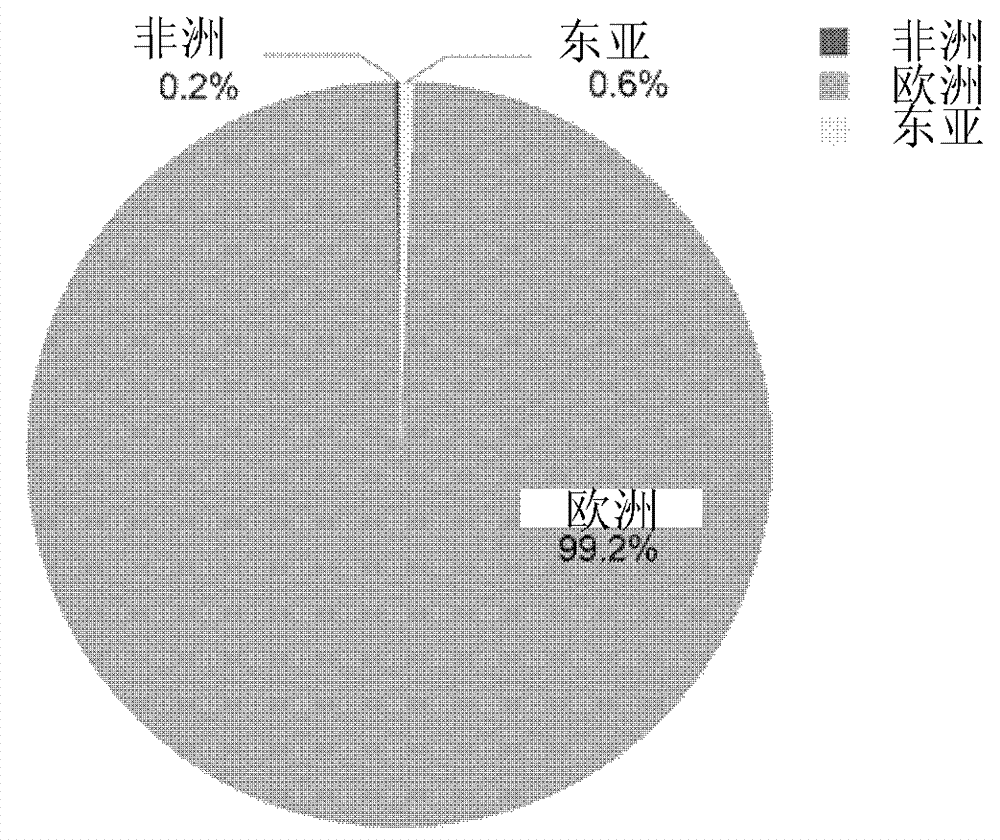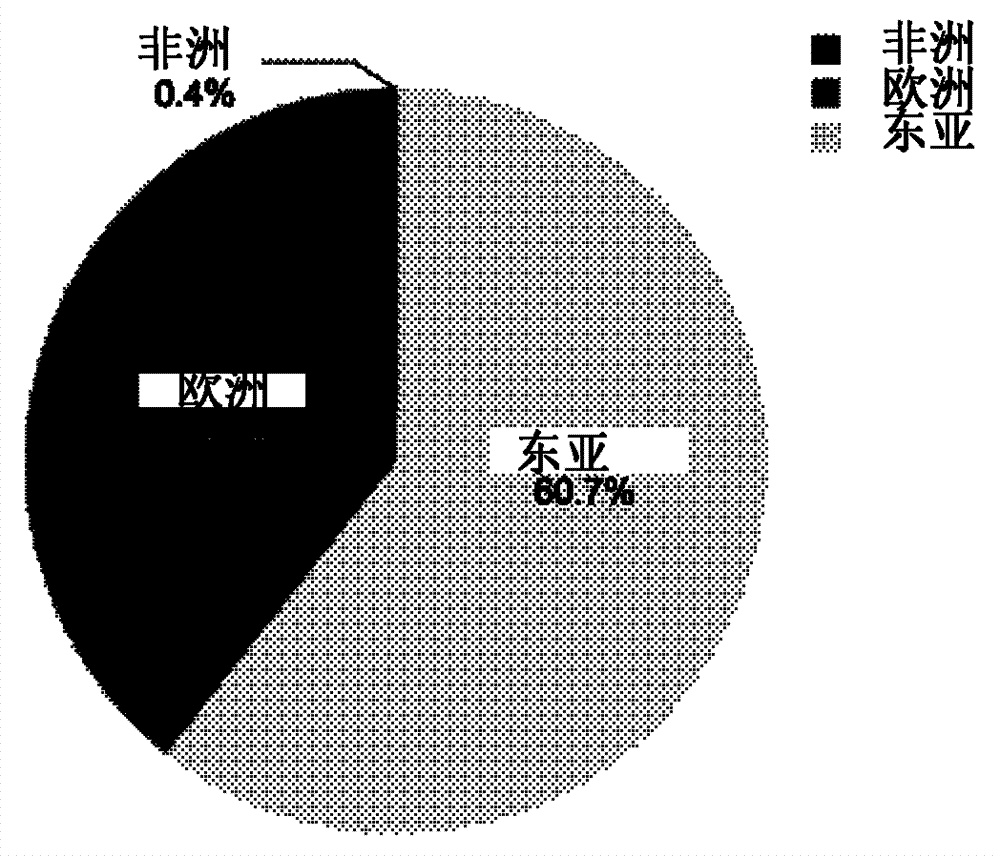Method and system for performing African, European and East Asian population genetic principal component analysis to unknown-source individual
A population genetic and individual technology, applied in biochemical equipment and methods, microbial measurement/inspection, DNA/RNA fragments, etc., can solve the problems that it is difficult to build a complex amplification detection system and difficult to popularize and use
- Summary
- Abstract
- Description
- Claims
- Application Information
AI Technical Summary
Problems solved by technology
Method used
Image
Examples
Embodiment 1
[0050] Example 1 Using the method and system of the present invention for non-, European and East Asian population genetic principal component analysis of individuals of unknown origin to infer the source of individuals of unknown origin
[0051] figure 1 The 27 SNP loci in the scheme of this application are analyzed by STRUCTURE software against 14 population STRUCTURE (K=3) population composition results. figure 1 The results show that this group of loci can effectively distinguish the three major populations of Africa, Europe, East Asia and their mixed populations.
[0052] The method and system of the present invention are used to infer the source of individuals in Case 1 and Case 2. Case 1 The skeletal remains found in Northeast China (the skeletal fragments in Case 1 have been handed over to the U.S., and the identity has been confirmed as a U.S. Air Force pilot who fell 56 years ago, and is of European origin);
[0053] The three charred corpses in Case 2 need to identify thei...
Embodiment 2
[0096] Using the same method and system as in Example 1, using the same steps to analyze the principal component composition of the population of randomly selected samples from Africans, Europeans, and Asians using the method and system of the present invention.
[0097] The samples taken are the following 5: Figure 6A For the African sample YRI330, Figure 6B For the European sample CEU998, Figure 6C GIH1179 for South Asian (non-European and East Asian mixed) sample, Figure 6D For the East Asian sample CHN870, Figure 6E It is the sample CUX1066 of Central Asians (European and East Asian mixed). The results are shown in Figure 6. The pie chart shows the proportions of the principal genetic components of individuals in non-, European, and East Asian populations. According to the numerical value from large to small, the possible population sources of individuals are indicated. It can be seen that the analysis results of the principal components of population genetics are consist...
Embodiment 3
[0099] Using the method and system of the present invention, 422 samples of known sources selected in the HapMap database were re-inferred on ethnic origin to test the accuracy of the above-mentioned non-, European, East Asian and mixed ethnic inference systems. The results are shown in Table 4. Shown:
[0100] Table 4 The inference results of the selected 422 samples by the non-, European and East Asian ethnic inference system
[0101]
[0102]
[0103] Among them, 422 samples are known, African sample (sample size 84), European sample (sample size 85), East Asian sample (sample size 86), Central Asian (European and East Asian mixed) sample (sample 165 people)
[0104] Through the method and system of the present invention to perform principal component analysis on the above 422 samples, it is possible to infer all African samples as Africans, all European samples as Europeans, and East Asian samples as East Asians and Central Asians. The results are all mixed ingredients from Eur...
PUM
 Login to View More
Login to View More Abstract
Description
Claims
Application Information
 Login to View More
Login to View More - R&D
- Intellectual Property
- Life Sciences
- Materials
- Tech Scout
- Unparalleled Data Quality
- Higher Quality Content
- 60% Fewer Hallucinations
Browse by: Latest US Patents, China's latest patents, Technical Efficacy Thesaurus, Application Domain, Technology Topic, Popular Technical Reports.
© 2025 PatSnap. All rights reserved.Legal|Privacy policy|Modern Slavery Act Transparency Statement|Sitemap|About US| Contact US: help@patsnap.com



